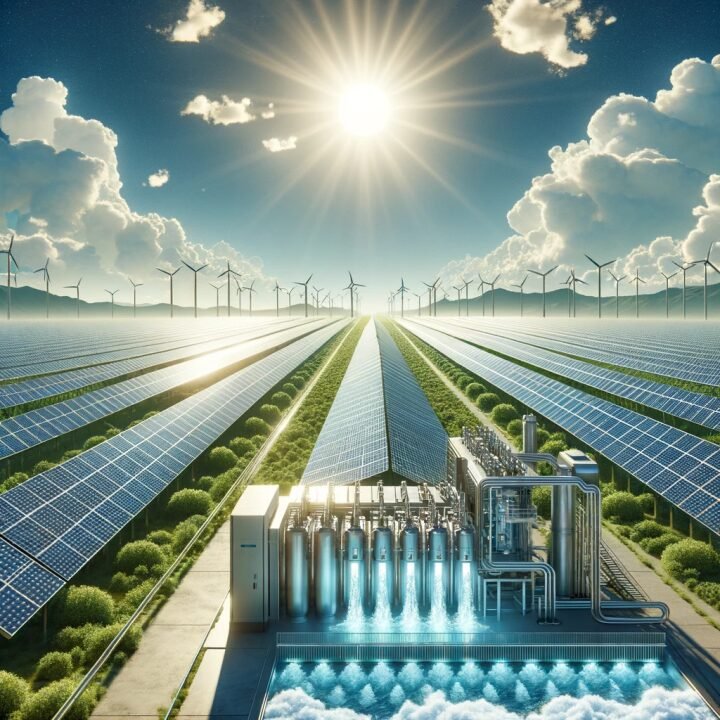In the rapidly evolving solar industry, the role of Engineering, Procurement, and Construction (EPC) services is pivotal. As the backbone of solar project delivery, EPC contractors are entrusted with transforming conceptual designs into fully operational solar power plants. However, amidst the industry’s race to meet rising global demand, the critical element of quality often faces challenges. Ensuring high-quality standards in Solar EPC services is not just about fulfilling contractual obligations; it’s about building a legacy of sustainable, efficient, and reliable solar energy systems.
The Crucial Impact of Quality
Quality in Solar EPC services influences every facet of a project—from the durability and efficiency of the installed solar panels to the overall return on investment and customer satisfaction. It’s a linchpin for regulatory compliance, operational excellence, and market reputation. Yet, many projects grapple with quality issues such as subpar materials, inadequate workmanship, and deviations from project specifications, leading to increased costs, delays, and underperforming solar installations.
Navigating Common Quality Challenges
The path to high-quality solar EPC services is fraught with obstacles, including fluctuating material quality, the complexity of project management, and the ever-present pressure of cost and time constraints. These challenges underscore the need for robust quality control processes and a proactive approach to quality management.

A Blueprint for Quality Excellence
1. Empower Through Education
The foundation of quality lies in the skills and knowledge of the workforce. Investing in ongoing training and obtaining industry-recognized certifications can elevate the standards of workmanship and project management. A well-informed team is the first step toward minimizing errors and enhancing project quality.
2. Stringent Quality Control Measures
Quality cannot be an afterthought. Implementing a rigorous quality control (QC) system that spans the entire EPC process ensures that every component and every construction phase meets the set standards and specifications. Regular inspections, testing, and comprehensive documentation are indispensable tools in this endeavor.
3. Leveraging Technology for Precision
The adoption of advanced technologies, such as aerial drone inspections and digital project management platforms, can significantly improve accuracy and efficiency. These tools not only facilitate better project oversight but also enhance communication and coordination among all stakeholders, paving the way for seamless project execution.
4. Cultivating Supplier Relationships
The quality of materials directly impacts the success of solar projects. Establishing strong, transparent relationships with suppliers and conducting thorough audits can ensure the reliability and quality of procured materials. A collaborative approach to quality assurance with suppliers can lead to mutual benefits and long-term partnerships.
5. Embracing Continuous Improvement
A culture of continuous improvement, driven by regular feedback and a proactive stance on problem-solving, can foster innovation and elevate quality standards. Encouraging open communication and learning from each project’s challenges will build resilience and adaptability in the face of the solar industry’s dynamic landscape.
6. Enhance Workforce Skills and Training
i. Continuous Training Programs
- Certifications: Provide employees with industry-recognized certifications in solar technologies and safety.
- Workshops and Seminars: Regularly host training sessions on new technologies and best practices.
ii. Cultivate Expertise
- Knowledge Sharing: Encourage knowledge sharing and mentoring within the team.
- Skill Development: Support professional growth and specialization in key areas such as system design and project management.
iii. Implement Quality Assurance
- Performance Metrics: Use performance metrics to assess and improve the quality of work.
- Audits: Conduct regular internal and external audits to ensure adherence to quality standards.
Conclusion
The quest for quality in Solar EPC services is a continuous journey, one that requires dedication, foresight, and a commitment to excellence. By focusing on training, stringent quality controls, technological advancements, supplier partnerships, and a culture of continuous improvement, EPC contractors can not only meet but exceed expectations, delivering solar projects that stand the test of time.
As we look to the future, let us champion quality as our guiding principle, ensuring that every solar project we undertake contributes positively to our planet’s sustainable energy goals. Let’s engage, innovate, and lead by example in our shared mission for a cleaner, greener world.
Contact us today at +91-8320095024 or visit www.soleosenergy.com to learn more about future of solar energy in India. Feel free to reach out with any questions or to start your solar journey!

Be part of this solar transformation. Pledge your commitment today to Solarize Bharat through Soleos Solar Energy Pvt. Ltd.. Let’s power our nation sustainably and equitably through homegrown, future-oriented solutions. The future is bright and solar!
Stay solar-powered and environmentally inspired!
P.S.: Share this blog with fellow solar enthusiasts to spread the word about the exciting world of solar energy!




